Taxonomy
Family: Acrididae
Subfamily: GomphocerinaeTribe: AmblytropidiiniComments: One of three species in this genus, two of which occur in North America north of Mexico (Cigliano et al., 2018) and only admirablis occurring in our area
Identification
Field Guide Descriptions: Capinera et al. (2004) Online Photographs: BugGuide , Google Images ,
iNaturalist , GBIF Technical Description, Adults/Nymphs: Batchley (1920); Otte (1981); Brust et al. (2014) Comments: A medium-sized to large, sexually dimorphic, Slant-faced Grasshopper, one of our most strikingly marked species. In males, the head and thorax are predominately brown or chestnut and streaked with pale yellow or ivory. The abdomen is mainly pale but marked with dark brown on the anterior edges of the segments. The tegmina are usually dark but with dark and pale spots in the lateral field. The hind femora are pale at the base and blotched with brown on the lateral and dorsal faces; the knees are black and the lower part of the hind tibiae are also dark. Females, in contrast, are primarily green on their head and thorax, but with the same pattern of dark brown shadings; the inner sides of the lateral carinae of the pronotum are also heavily striped with black or dark brown. The tegmina are green along the outer margin, with a wavy edge dorsally where the green band is bordered by dark brown along the upper lateral field. Size, color, and pattern are usually enough to distinguish this species in both sexes from all of our other species. Mermiria species are somewhat similar but are even larger and their markings consist of longitudinal stripes rather than the shorter streaks found in Syrbula.Total Length [body plus wings; excludes ovipositor]: 25-31 mm (to the end of the hind femora), males; 34-49 mm, females (Otte, 1981)Structural Features: Legs are proportionately longer than in other Slant-faced Grasshoppers except for the Mermiria species. Antennae are filiform -- slightly clubbed at the apex in some males -- in contrast to the flattened ensiform antennae found in Mermiria.Singing Behavior: Both sexes stridulate, with the calls of the males consisting of up to 60 calls consisting of two-syllable units (Otte, 1981).Nymphal Stages and Development: Nymphs from western populations are illustrated and described by Brust et al. (2014). The antennae are ensiform in the early instars but become filiform in later stages. The face is strongly slanting and there is a dorsal tan band that runs the entire length of the body, constrasting with the green on the sides.
Distribution in North Carolina
County Map: Clicking on a county returns the records for the species in that county.
Adult Dates: Click on graph to enlarge
Habitats and Life History
Habitats: Virtually all accounts of the habitats used by this species describe them as dry upland grasslands, often on poor soils and sparse vegetation (Morse, 1904; Rehn and Hebard, 1910; Blatchley, 1920; Otte, 1981; Capinera et al. 2004). While we have records from such habitats, particularly in the Piedmont, where several come from natural glades or disturbed areas on the summits of monadnocks, the vast majority of our records come from wet Longleaf Pine savannas. Even in the Fall-line Sandhills, where native dry grasslands predominate, our records come from seepage slopes and other wet grasslands rather than the drier slopes. These data suggest that a much wider range of open grassland are utilized than has been previously described. Diet: In the Prairie region, S. admirablis feeds mainly or exclusively on grasses, including a fairly wide range of genera and species (Brust et al., 2014)Observation Methods: Best found by walking through its habitat and flushing individuals into making short jumps. Males usually escape by flying but females are less likely to fly and try to escape along the ground (Otte, 1981)Abundance/Frequency: Regularly observed at some sites but usually in only small numbersAdult Phenology: One brood, with adults first appearing in June and persisting until October
Status in North Carolina
Natural Heritage Program Status: Natural Heritage Program Ranks: G5 SNR [S3S4]State Protection: Has no legal protection, although permits are required to collect it on state parks and other public landsComments: In North Carolina, this species appears to be most common in wet Longleaf Pine habitats, which have been greatly reduced since European settlement. It has also been recorded over most of the rest of the state, where it occupies a wider range of drier, upland habitats. If they turn out to be common in such habitats -- which still needs to be confirmed here in North Carolina - they are likely to be fairly secure within the state.
Image Gallery for Syrbula admirabilis - Handsome Grasshopper Recorded by: Stephen Hall, Mark Basinger, and Gary Perlmutter Recorded by: Jim Petranka and Becky Elkin Recorded by: Jim Petranka and Becky Elkin Recorded by: Jim Petranka and Becky Elkin Recorded by: Mark Basinger, Jim Petranka, and Becky Elkin Recorded by: Mark Basinger, Jim Petranka, and Becky Elkin Recorded by: Stephen Hall Recorded by: Stephen Hall Recorded by: Stephen Hall Recorded by: Mark Basinger, Jim Petranka, and Becky Elkin Recorded by: Mark Basinger, Jim Petranka, and Becky Elkin Recorded by: Stephen Hall and Mark Basinger Recorded by: John Petranka Recorded by: John Petranka Recorded by: John Petranka Recorded by: Ken Kneidel Recorded by: Ken Kneidel Recorded by: Stephen Hall Recorded by: NEW Recorded by: E. Corey Recorded by: FKW Recorded by: FKW
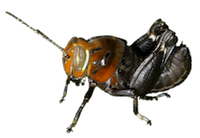
 »
»
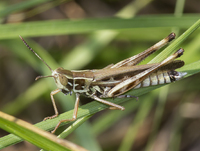
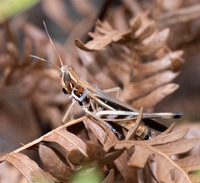
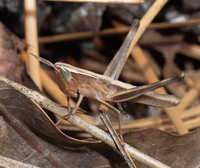

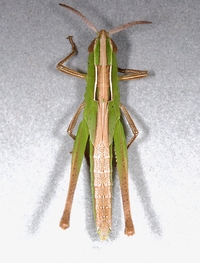

 »
»




